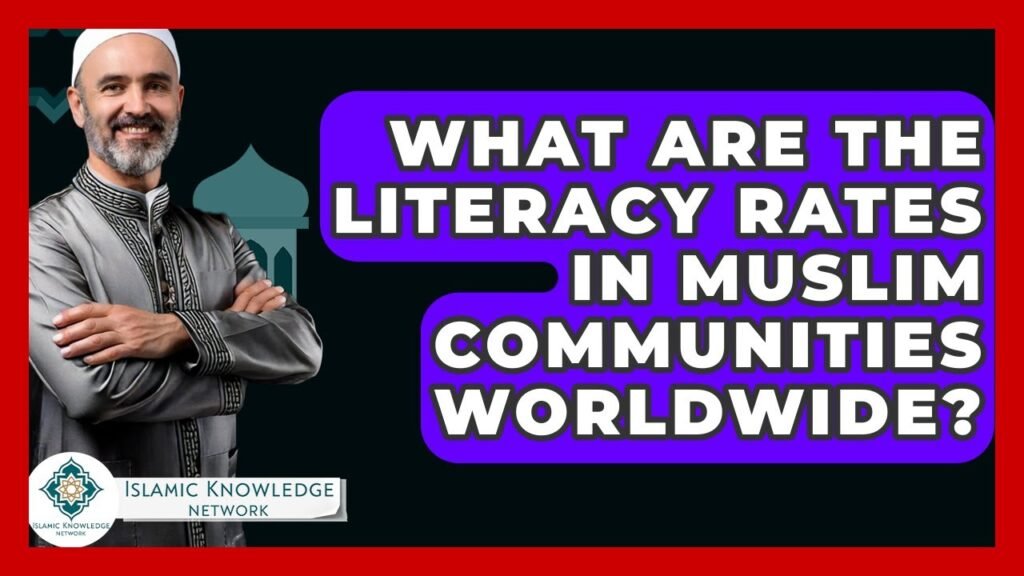You are here to read: What Are the Literacy Rates in Muslim Communities Worldwide? – A Thoughtfully Written Guide Offering Spiritual Wisdom and Travel Advice for Every Pilgrim who is going on holy journey of Hajj or Umrah.
What Are The Literacy Rates In Muslim Communities Worldwide? – Islamic Knowledge Network
In a rapidly evolving world, literacy stands as a cornerstone for empowerment and growth, particularly within diverse communities across the globe. Among them, Muslim communities, spanning continents from Asia to Africa and beyond, showcase a rich mosaic of cultural heritage and educational challenges. Understanding the literacy rates in these communities is crucial not only for addressing gaps in education but also for driving social and economic development. This exploration will highlight current statistics on literacy within Islamic societies and provide context for the multifaceted factors influencing these rates.
At Airlink Hajj and Umrah, we believe that knowledge is integral to reaping the full benefits of spiritual journeys such as Hajj and Umrah. Therefore, while you stay informed about the latest updates regarding these pilgrimages on our blog, it’s equally significant to engage with the broader conversation around education in Muslim communities. By fostering awareness of literacy challenges and accomplishments, we can cultivate a greater understanding of the socio-cultural dynamics at play, ultimately striving for progress and empowerment for all. Join us as we delve deeper into the complexities of literacy within these vital communities.
What Are the Literacy Rates in Muslim Communities Worldwide?
Literacy rates in Muslim communities vary significantly based on geographic location, educational infrastructure, and socio-economic conditions. According to UNESCO, the global literacy rate among adults is around 86%, but in many Muslim-majority countries, this figure fluctuates. For instance, countries like Turkey and Malaysia boast high literacy rates of above 95%, while others, such as Afghanistan and Yemen, struggle with rates as low as 37% and 70%, respectively.
Economic development, cultural factors, and investment in education play crucial roles in shaping these statistics. Many Muslim communities are making strides in improving literacy, particularly among women and children, as education becomes recognized as a vital component of societal progress. Local initiatives, alongside international support, are pivotal in boosting literacy levels in underprivileged areas.
At Airlink Hajj and Umrah, we understand the importance of education in empowering communities. Our blog offers the latest updates on Hajj and Umrah, focusing not only on spiritual journeys but also on uplifting education in the Muslim world. By keeping informed, we can contribute to literacy advancements and social development across Muslim communities globally.
FAQ on What Are the Literacy Rates in Muslim Communities Worldwide?
-
What are the current global literacy rates in Muslim communities?
Literacy rates in Muslim communities vary significantly by country and region, with some areas achieving over 90% literacy, while others may be much lower, particularly in less developed nations.You're at the middle of this awesome post at AirlinkHajjandUmrah.com through: What Are the Literacy Rates in Muslim Communities Worldwide?. Keep reading, it gets better!
-
How do literacy rates in Muslim communities compare to non-Muslim communities?
In many regions, literacy rates in Muslim communities are comparable to non-Muslim communities; however, disparities exist due to factors like socio-economic status, education infrastructure, and cultural attitudes toward education. -
What factors contribute to low literacy rates in some Muslim communities?
Factors such as poverty, lack of access to quality education, traditional attitudes towards gender roles, and political instability can significantly impact literacy rates in certain Muslim communities.
-
Are there initiatives aimed at improving literacy in Muslim communities?
Yes, various NGOs, government programs, and international organizations are actively working to improve literacy rates in Muslim communities through education initiatives, resource provision, and community engagement. - How does women’s literacy in Muslim communities compare to men’s literacy?
Women’s literacy rates in many Muslim communities are generally lower than men’s, often due to cultural barriers, lack of access to education, and socio-economic challenges, although this gap is narrowing in some regions.
That wraps up What Are the Literacy Rates in Muslim Communities Worldwide?. Thanks for sticking with us till here! Share this: What Are the Literacy Rates in Muslim Communities Worldwide? with your friends.
Check our homepage at Air Link Hajj & Umrah for more awesome updates.
Some interesting posts are: 1: Umrah Mubarak, 2: When is Umrah closed 2026?, 3: When does Umrah start after Hajj 2026?
Mushu, an experienced Saudi Arabia traveler and writer, shares insightful tips and spiritual reflections to enhance Hajj and Umrah journeys for fellow pilgrims. He has been to Makkah and Madina from 2016 to 2023 many times and his posts will reflect this.







